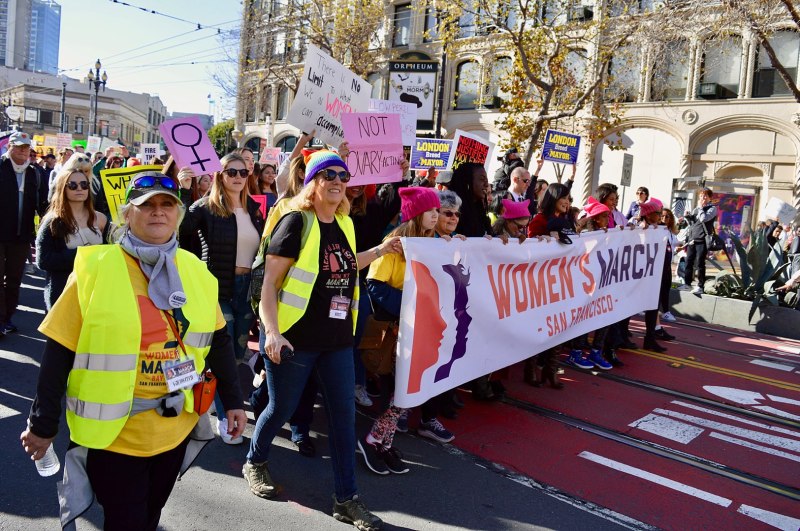A couple of my best friends and I got together for our customary dinner at Casper the evening prior to the fourth annual women’s march, which took place in many cities across the United States, including our local San Francisco. As we talked about classes and clubs, and spilled innocuous tea, we discussed our fantastic plans for the upcoming three-day weekend. My friend talked about how she was going to go to the SF Women’s March, and the other two of us decided that we would tag along, having never attended one before. I was beyond thrilled to go, having written one of my mini 50-word essays for the Stanford application about the march.
After making some expletive-laced and undeniably powerful signs (with messages like “f*ck the patriarchy” and “amb*tchous as f*ck”), we planned out our day.
The next day, after brunch courtesy of Arrillaga Dining, we headed to the Caltrain station and traveled all the way from Zone 3 to 1. The Caltrain worker that walked up the aisles of the train stopped when he passed by our row, glanced at my sign, said “great sign” and proceeded down the walkway.
After walking over to Market Street, where the 1.7-mile march took place, we waited for the thousands-strong procession to come down. The march started at the Civic Center Plaza and finished at Embarcadero right at the coast. As we walked, the wind started whipping harder, a telltale sign of the nearby ocean. As we were walking down the street, people were pausing to take a gander at what was written on our posters. I noticed one man continuing to crane his neck at our posters, so as we crossed the street, I turned mine around and held it in his direction, to which he smiled. Surprisingly, an older woman saw my friend’s “f*ck the patriarchy” sign and asked what it meant, which really highlights how some people don’t know the word “patriarchy” or how it has been so pervasive in American society. Clearly, we need to ensure that all generations know of the patriarchy’s deleterious existence, so we can put into effect methods to eradicate it.
One aspect of the march that was undeniably powerful was that the procession was led by members of the Native American/indigenous communities who were advocating for Missing and Murdered Indigenous Women. Behind these marchers was a group of drummers, who provided strong beats that reverberated throughout the crowds, energizing people to continue forward.
At times, we would shout out chants and dance a bit to the rhythm of the drums, and at other times, we walked without a sound in awe of the fierce power of thousands of “nasty women” (in honor of the phrase “nasty woman” so eloquently used by Donald Trump to describe Hillary Clinton in the 2016 presidential debates).
Together, we marched for women’s prerogatives that included those such as complete pay equality, immigrant rights, reproductive rights, civil rights, environmental justice and LGBTQIA rights (with many more listed on the official Women’s March website). The weather was truly in our favor, and I would not have wanted to spend my Saturday morning doing anything else. The most beautiful part of the march was the unified solidarity and intersectional feminism that radiated through the marchers of all genders, ages, races and socioeconomic backgrounds.
We concluded the day with a trip to the cutest boba shop ever — Boba Butt, whose entire brand centers on a corgi’s derriere — and headed back to catch the Caltrain. Something that was super surprising was that we had walked a whopping eight miles the entire day, but I guess that really serves as a testament to the fact that time does fly when you’re having fun.
Contact Sarayu Pai at smpai918 ‘at’ stanford.edu.
